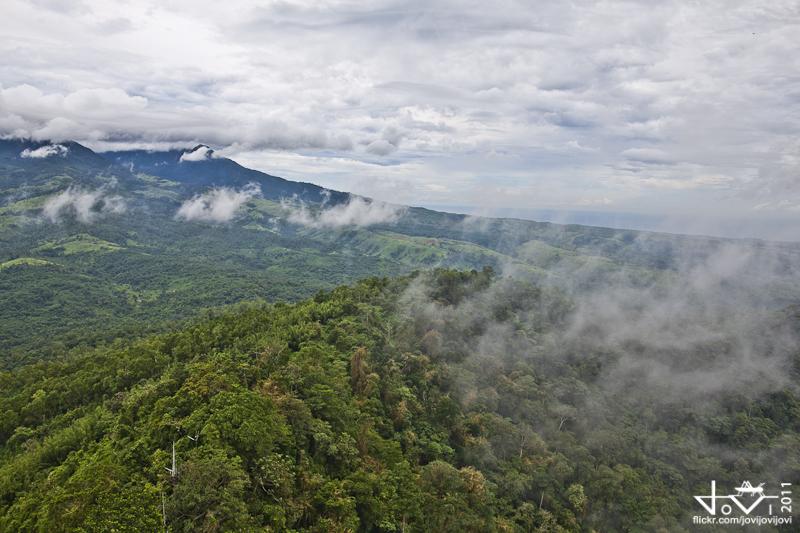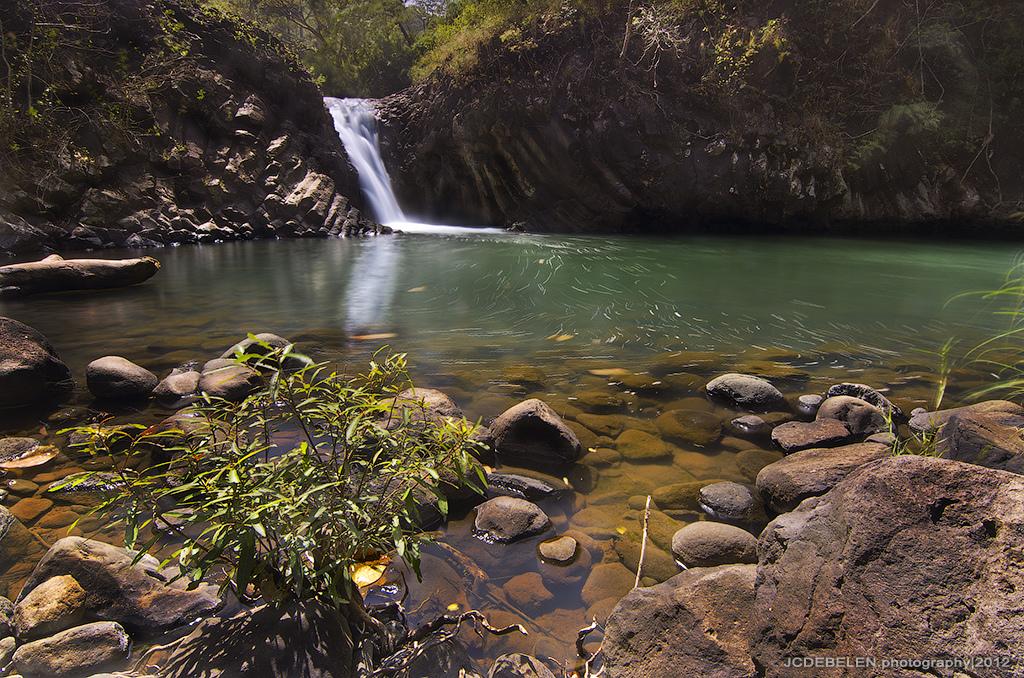
Mount Samat is a historic mountain that can be found in the town of Pilár, Bataan. Situated near the summit is the Mount Samat National Shrine, a national shrine dedicated to the fallen Filipino and American during World War II.
Mount Samat is a parasitic cone of Mount Mariveles with no record of historical eruption. The summit of Mount Samat is 9.2 km (5.7 mi) NNE of the Mariveles caldera. Mount Samat itself has a 550-metre (1,800 ft) wide crater that opens to the northeast. The Mount Samat Cross is situated near the edge of the crater rim.
Historical Importance
At the start of World War II in 1942, after suffering heavy losses against the Imperial Japanese Army all over Luzon, the Filipino and American soldiers retreated to Bataan Peninsula to regroup for a last valiant but futile stand. After four months of fighting, the 78,000 exhausted, sick and starving soldiers under Major General Edward P. King surrendered to the Japanese on April 9, 1942, known as the fall of Bataan. It is the single largest surrender of U.S. soldiers in history and Mariveles, a town in the Baataan province, was their last stronghold after which, together with the Philippine soldiers, they were led on to the 80-mile (130 km) march to Capas, Tarlac known as the Bataan Death March.
The Mount Samat National Shrine shrine was erected as a fitting memorial to the heroic struggle and sacrifices of those soldiers who fought and died in that historic bastion of freedom.
Attractions
- Dunsulan Falls is a waterfall located at the foot of Mount Samat, northeast of the National Shrine in Brgy Liyang, also in Pilar town. Dunsulan falls and river is the main drainage on the crater side of Mount Samat.
Mount Samat National Shrine
- Mount Samat National Shrine (Dambana ng Kagitingan or Shrine of Valor) is a historical shrine located near the summit of Mount Samat in the town of Pilár, Province of Bataan, in the Republic of the Philippines. The memorial shrine complex was built to honor and remember the gallantry of Filipino and American soldiers who fought during World War II.
- Consisting of a Colonnade and a large Memorial Cross, the park was commissioned in 1966 by then-President Ferdinand Marcos, himself a War Veteran, for the 25th Anniversary of WW2. The white Memorial Cross stands as a remembrance to the soldiers who fought and lost their lives in the Battle of Bataan. The shrine complex also includes a war museum with a wide array of collections from paintings of the Philippine heroes, to armaments used by the Filipino, American and Japanese forces during the battle.
- From the colonnade and the cross, there is a panoramic view of Bataan, Corregidor Island and on a clear day, the city of Manila situated about 50 km (31 mi) across Manila Bay.
Gallery:




Where to Stay
Here is the a of hotels and apartelles located in different towns around the province that can accommodate tourists when visiting Bataan. You may wish to check if you are near the following:
- Crown Royale Hotel - Balanga City
- D' Samat Lodge - Balanga City
- Hillside Garden Mansions - Balanga City
- Acacia Apartelle - Limay
- Benzi Lodge & Restaurant - Hermosa
- Buenavista Lodge - Balanga City
- Le Petit Baguio - Orani
- Ligaya Consuelo Hotel - Pilar
- Marian Hotel - Pilar
- Nestville Lodge I, II, III - Limay
- NPC Hotel and Resort Village - Bagac
- Travel Lodge - Orani
How to get there
By Land
Bataan is very accessible. From Manila, the travel time will take more or less 1 1/2 hours via NLEX (North Luzon Expressway). Bus companies that ply the 124 km route also service the commuting public from Manila to Bataan. An ultra-modern highway, SCTEx, connects Clark to Subic, which makes Bataan even more accessible to more cities, allowing more commuters to reach their destination in no time at all.
Enter the province of Bataan via Dinalupihan, which is 101 kilometers away from Manila. Travel time is about one hour. From there, Balanga City, the capital of the province, is around twenty kilometers away. Minibuses, jeepneys and tricycles are available as a mode of transportation around the province from the City of Balanga to nearby towns in the province. Those buses depart every 15-30 minutes to provide convenient trips to all travelers.
By Sea
The province has an extensive coastline with 11 municipalities having marine boarders; there are about 14 tertiary parts, 2 of which are classified as national ports, namely the Port of Mariveles and the Port of Orion.
By sea via ferry from the CCP Terminal in Roxas Blvd, Manila to the Diosdado Macapagal Ferry Terminal in Orion, 22.5 nautical miles or a convenient 45-minute trip will lead commuters to the bustling Orion port. For an affordable fee, one will be able to escape the traffic of land travel and feel the refreshing sea breeze and the splendor of Manila Bay.
By Air
One could reach Bataan in just a few minutes by air, having several private helipads in the province. There are also two international airports at both ends of the province: the world-class Clark International Airport and the equally recognized Subic Bay International Airport. Both offer facilities that can easily accommodate 25 million passengers annually from the international and domestic market.










